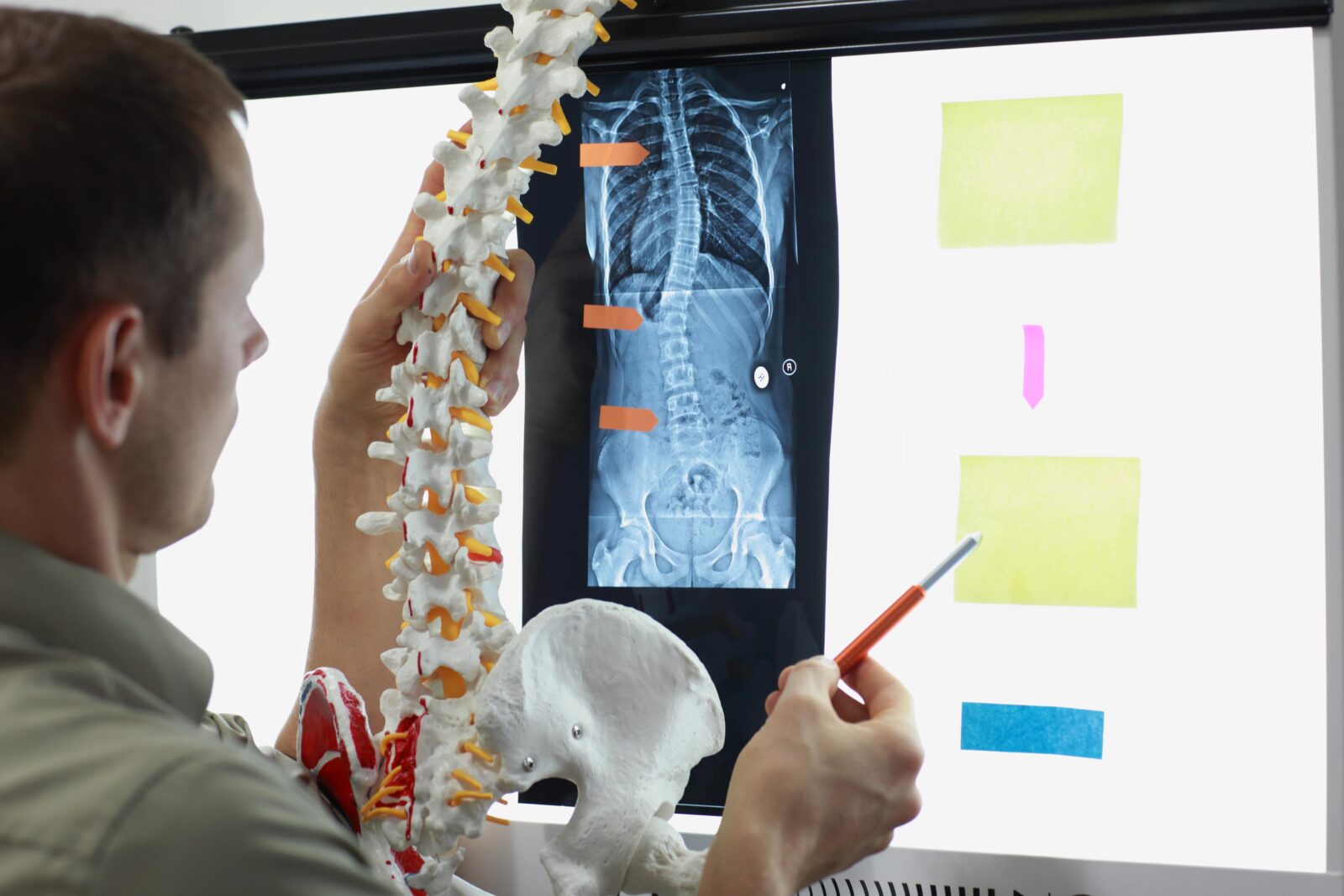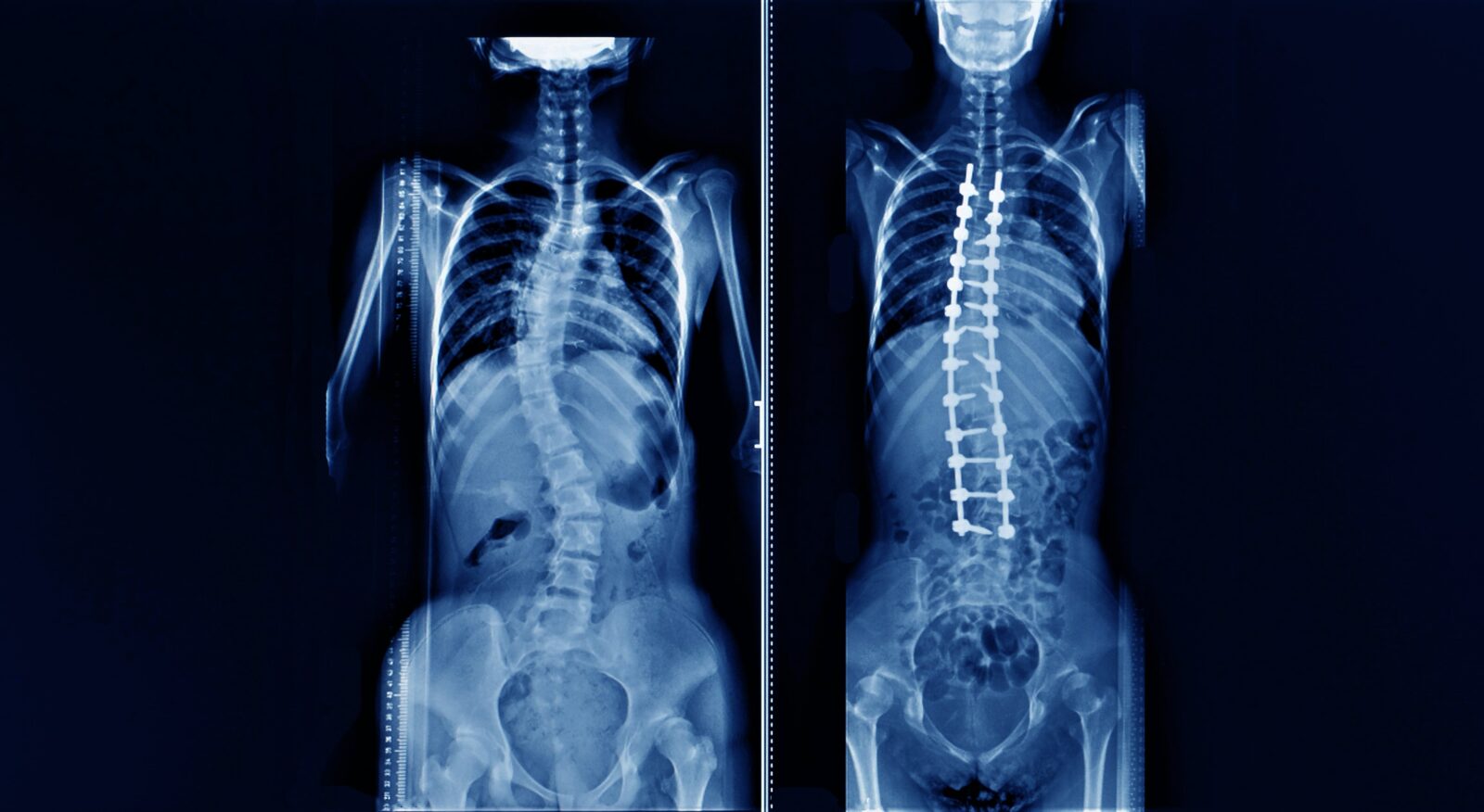Scoliosis is a prevalent medical condition characterized by an abnormal sideways curvature of the spine. While it can affect individuals of all ages, it most commonly emerges during the growth spurt just before puberty. Understanding the different types of scoliosis and knowing when surgery is needed is crucial for effective management of the condition. In this article, we will explore the various types of scoliosis, ranging from idiopathic and congenital to neuromuscular and degenerative. Furthermore, we will discuss the circumstances in which surgery becomes necessary, such as progressive curvature, pain and discomfort, respiratory compromise, and cosmetic concerns. By delving into these aspects, we hope to provide insights into scoliosis and its treatment options, aiding individuals and their families in making informed decisions about their healthcare.
Types of Scoliosis:
There are different types of scoliosis, including:
Idiopathic Scoliosis
This is the most common type of scoliosis, accounting for around 80% of cases. Idiopathic scoliosis has no identifiable cause and is classified into three subtypes:
- Infantile Scoliosis: Occurs in children below the age of three.
- Juvenile Scoliosis: Occurs between the ages of 3 and 10.
- Adolescent Scoliosis: Typically appears during the growth spurt before puberty.
Congenital Scoliosis:
This type of scoliosis is present at birth and occurs due to spinal abnormalities that develop during fetal development. Congenital scoliosis is caused by malformations in the vertebrae or the fusion of certain vertebrae, leading to an abnormal curvature.
Neuromuscular Scoliosis:
This type of scoliosis is caused by underlying neuromuscular conditions such as cerebral palsy, muscular dystrophy, or spinal muscular atrophy. The curvature of the spine in neuromuscular scoliosis is usually progressive and can be severe.
Degenerative Scoliosis:
Also known as adult-onset scoliosis, this type of scoliosis occurs due to age-related wear and tear on the spine. Degenerative changes in the discs and joints of the spine can lead to an abnormal curvature.
When is Surgery Needed?

- Curvature Progression: If the curvature of the spine worsens rapidly, particularly during the adolescent growth spurt, surgery may be necessary. The decision to intervene surgically is often based on the severity of the curve and the risk of further progression. Severe curves that are likely to continue worsening may require surgical correction to prevent long-term complications.
- Pain and Discomfort: Severe scoliosis can cause chronic pain and discomfort. If non-surgical treatments, such as physical therapy, bracing, or medication, fail to provide sufficient relief, surgery may be considered. Surgical intervention aims to correct the curvature and alleviate pain by stabilizing and straightening the spine.
- Respiratory Compromise: In cases where scoliosis significantly affects lung function and impairs breathing, surgery may be necessary. Severe curvature can reduce the space within the chest cavity, limiting lung expansion and leading to respiratory complications. Surgery helps to realign the spine, create more space for the lungs, and improve respiratory function.
- Cosmetic Concerns: Scoliosis can result in visible changes in body symmetry and posture. If the curvature becomes noticeable and affects the individual’s self-esteem or body image, surgery may be an option to improve the overall appearance. Cosmetic considerations may be a factor, especially for individuals with significant deformities.
It is important to note that the decision to undergo scoliosis surgery is highly individualized and should be made in consultation with a spine specialist. The specific indications for surgery may vary based on factors such as the type and severity of scoliosis, the age of the patient, associated symptoms, and overall health considerations. A thorough evaluation and discussion with a healthcare professional can help determine the most appropriate treatment approach for each individual.
Surgical Approaches for Scoliosis:
There are several surgical approaches available for treating scoliosis. The choice of surgical technique depends on factors such as the type and severity of scoliosis, the age of the patient, and the goals of treatment. The most common surgical procedures for scoliosis include:

- Spinal Fusion: Spinal fusion is the most prevalent surgical technique for scoliosis. It involves fusing together two or more vertebrae to correct the curvature of the spine. During the procedure, the surgeon places bone grafts or synthetic bone material between the affected vertebrae, promoting the growth of new bone that eventually fuses the vertebrae together. The fusion creates a solid, stable spinal column and prevents further progression of the curvature.
- Instrumentation: Instrumentation is often combined with spinal fusion to stabilize the spine and assist in the correction of the curvature. This involves the use of metal implants such as rods, screws, hooks, or wires, which are attached to the spine to provide support and maintain alignment during the healing process. The implants can be adjusted or lengthened as the spine grows.
- Osteotomy: In certain cases of severe scoliosis, an osteotomy may be performed. This procedure involves cutting and reshaping the bone to improve spinal alignment. By removing or repositioning segments of the vertebrae, the surgeon can correct the curvature and achieve better spinal balance.
- Thoracoscopic Surgery: Thoracoscopic surgery, also known as minimally invasive surgery, is a newer approach for scoliosis treatment. It involves making small incisions and using specialized instruments and a tiny camera to visualize and perform the procedure. This technique can minimize tissue damage, reduce scarring, and potentially lead to a faster recovery.
The specific surgical approach chosen depends on various factors, including the severity and location of the curve, the patient’s age and overall health, and the surgeon’s expertise. It is important to consult with a spine specialist who can evaluate the individual case and recommend the most suitable surgical technique for scoliosis treatment.
In Conclusion:
Scoliosis is a complex condition that can vary in severity and types. While many cases of scoliosis can be managed with observation, bracing, or non-surgical interventions, there are situations where surgery becomes necessary. The decision to undergo surgery for scoliosis is typically based on factors such as the progression of the curve, pain levels, impact on lung function, and cosmetic concerns. If you or a loved one has scoliosis, it is important to consult with a spine specialist who can provide appropriate guidance and recommend the most suitable treatment plan.










